Up Next

If the only races which counted towards the 2008 world championship were those which had not been illegally subverted, then Felipe Massa would be Ferrari’s most recent Formula 1 world champion. The defrauding of the outcome of Singapore that year lost Massa a race he would otherwise almost certainly have won and in hindsight it lost him the title.
Without Nelson Piquet Jr’s deliberate crash in Singapore, Massa would have entered the Brazil finale around three points ahead (depending upon where Lewis Hamilton would have finished in Singapore without the Renault team’s antics). His subsequent Interlagos victory and Hamilton’s fifth place would have had Massa winning the title by a likely nine points.
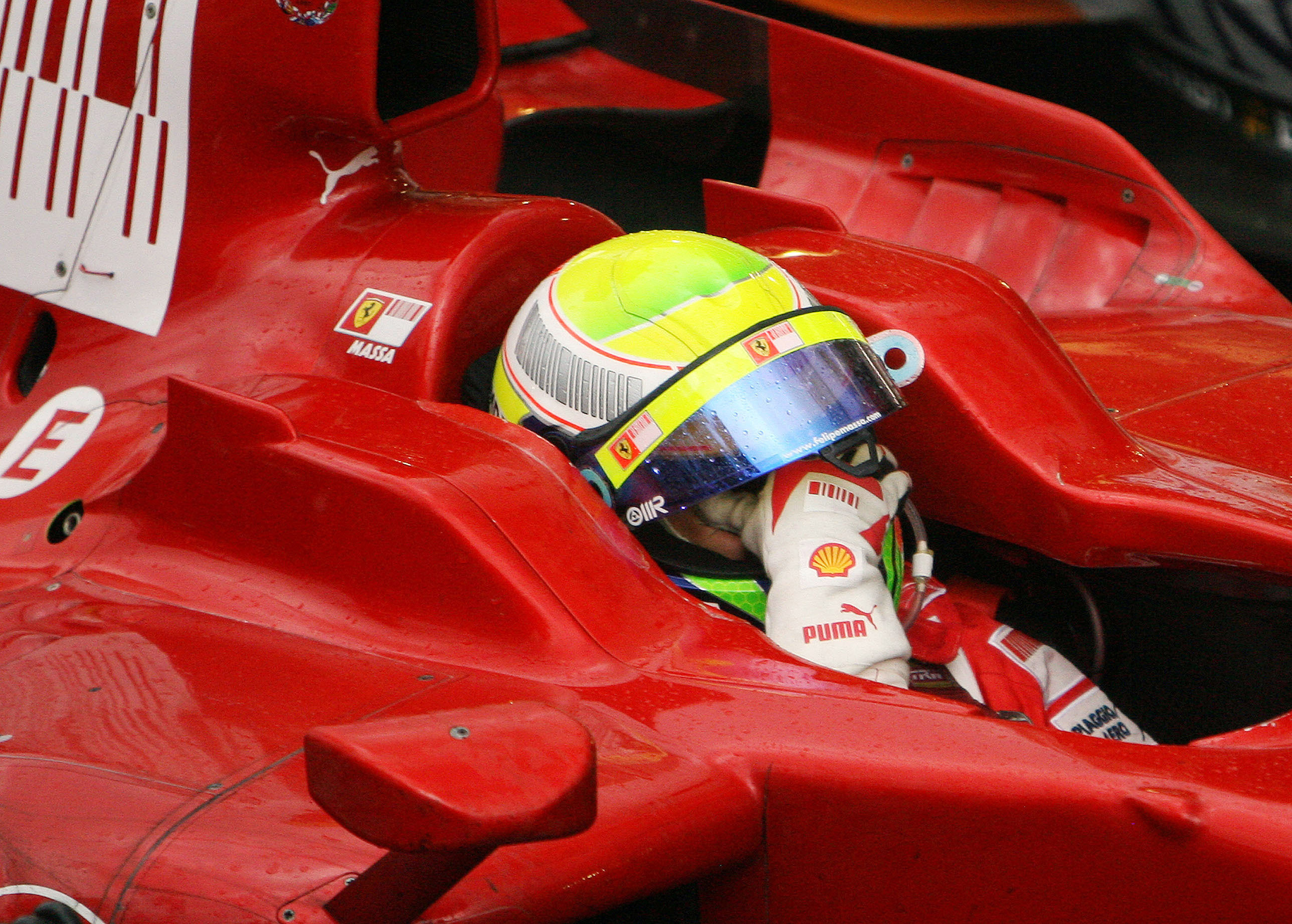
Ferrari and Massa elected not to pursue legal resolutions at the time, when the scandal made its way out into the open. But Singapore 2008 has been in the news again as of late, due to Massa publicly reconsidering that stance.
Informed by people who were there but who understandably cannot be quoted, let’s go behind the scenes at Renault post-qualifying in Singapore.
In fact, let’s first rewind a little even from that moment to a few weeks before, back at the factory.
The parent company was unconvinced about whether it would remain in F1 for 2009. Things had been tough since its title-winning double of 2005 and 2006, and in the wake of the banking-induced global financial crisis the corporate finances were not in a good place. An under-performing F1 team which cost north of £200million a year to run was an obvious place for the accountants to draw a red line through.
Team boss Flavio Briatore told his senior staff that the parent company had informed him unless they could win a race in the remainder of this season – something which looked highly unlikely given that the car, even in Fernando Alonso’s hands, was not a frontrunner – they would likely be pulling out for 2009. The pressure to deliver was immense. As far as the senior people there were concerned, they could be looking at the closure of the team.
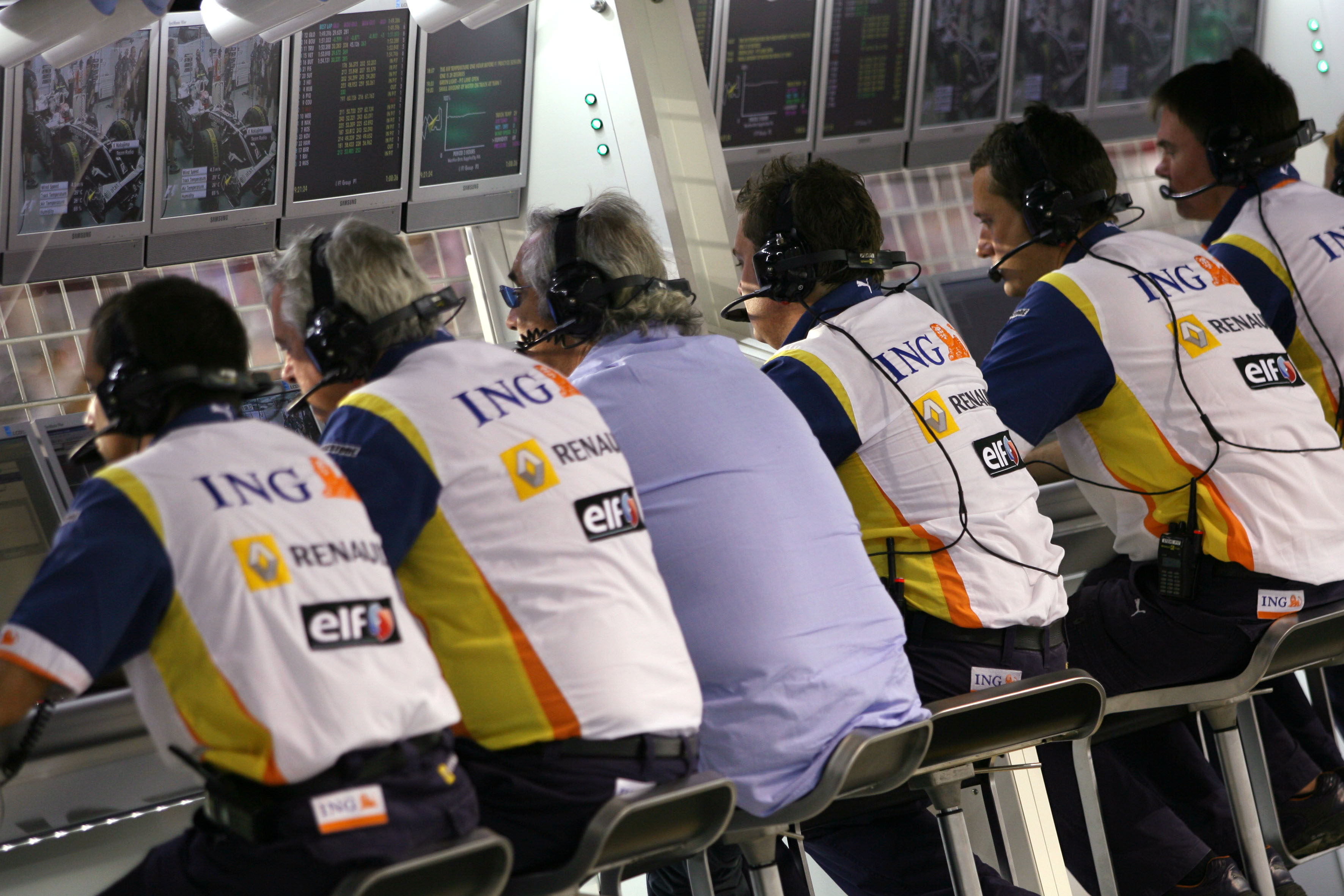
But in Singapore things were looking up. The car was on a productive development curve, there was a significant power boost from a new blend of Elf fuel, and the street venue was the perfect place for Alonso to make a big difference.
In both FP2 and FP3, he went fastest, marginally faster than Lewis Hamilton’s McLaren and the Ferraris. He was maybe flattered by a lighter fuel load, but regardless he was somewhere close. He felt sure he could qualify in the top four and from there he might have been able to weave his magic to pull a result out the bag.
He went sixth-fastest in the Q1 part of qualifying. But as he took to the track for his first Q2 lap a fuel feed problem left him stranded out there. Meaning he’d be starting the race 15th. This was a devastating blow.
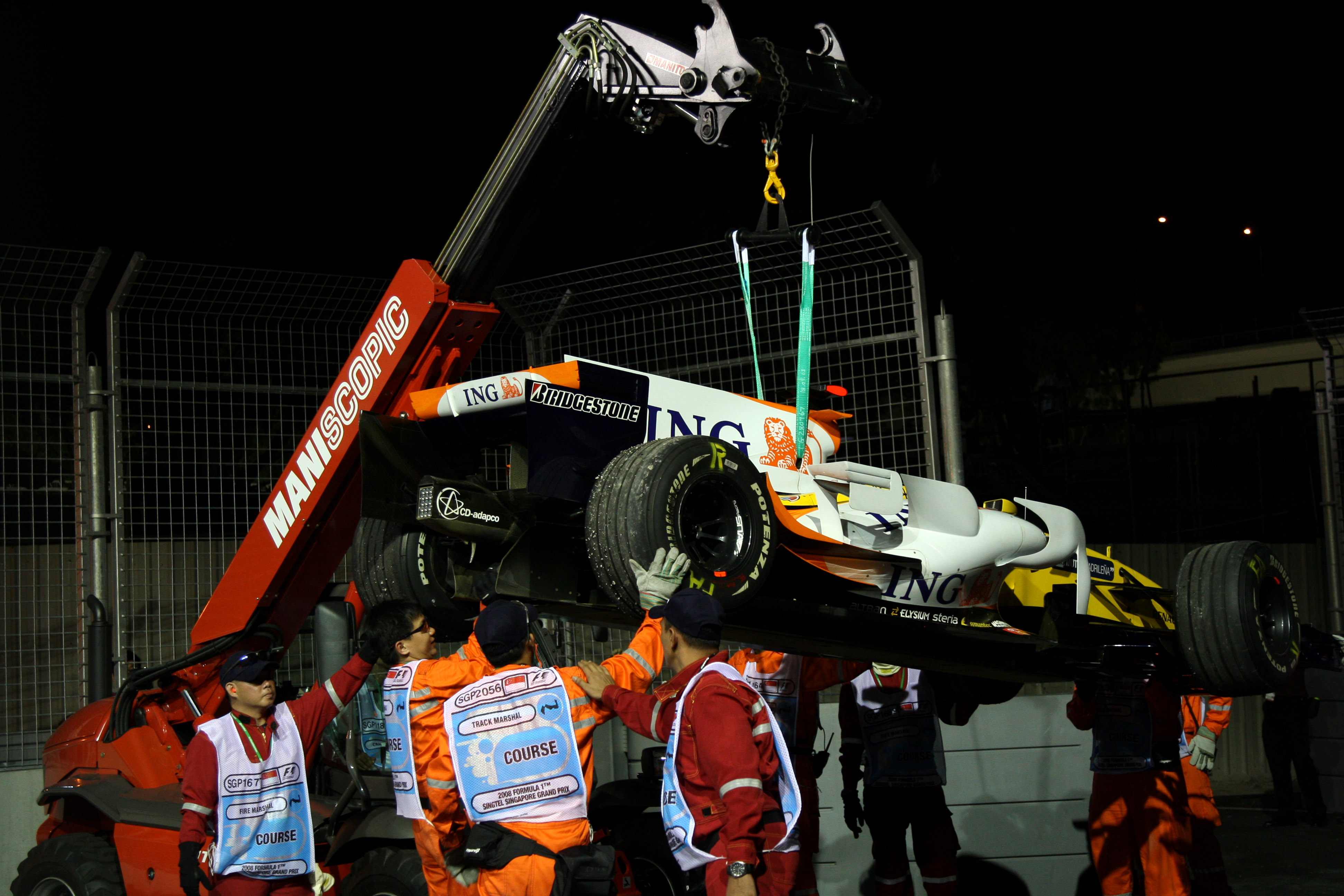
The mood was downcast in the debrief. A follow-up discussion took place as strategy options for the race were discussed with senior personnel. Someone suggested jokingly that maybe they could have Alonso pit early and then have Piquet deliberately bring out a safety car (which would close the pitlane with the regs as they were then), boosting Alonso up the field.
Briatore looked across to his people. Was that feasible, he asked? Would that work?
Realising he was serious, they looked carefully at the circuit map and where the cranes were positioned. They concluded that if it happened at the tight Turn 17, where there were no cranes, a safety car would be necessary. Briatore asked them to arrange it. Piquet Jr was informed of the plan and agreed. For the good of the team. Today he claims he was bullied into it by Briatore, with the underlying threat of losing his drive after failing to impress in his rookie season.
Upon being asked over the radio to ‘push’ he planned to deliberately spin on the exit of Turn 17, applying too much throttle so as to power-slide the right-rear tyre into the barriers – a harmless, low-speed accident but one which would block the track. On the reconnaissance lap to the grid, he made a practice spin.
The race got underway with poleman Massa leading comfortably from Hamilton, Kimi Raikkonen and Robert Kubica, with Alonso 12th and Piquet 18th.
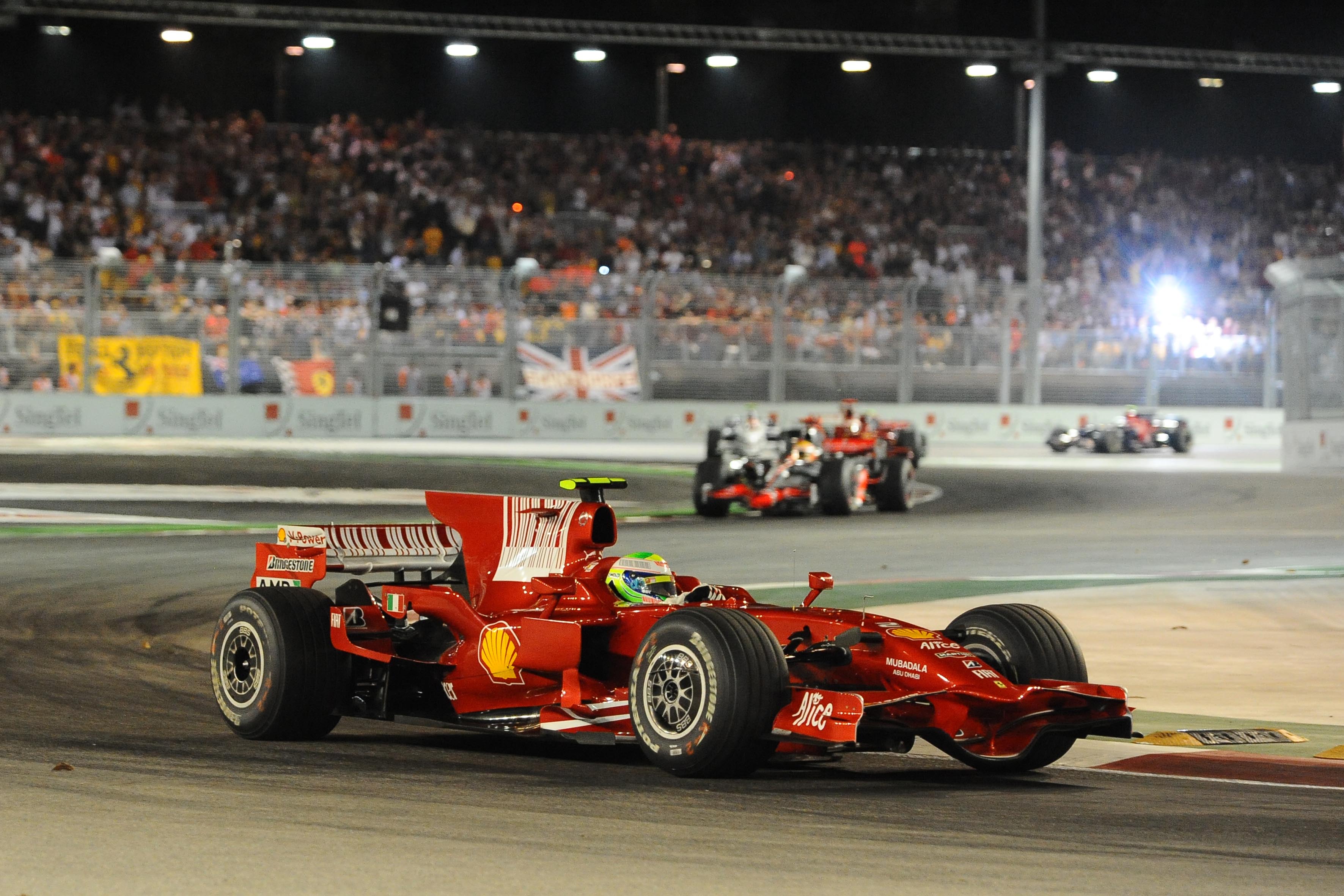
Alonso put a move on Jarno Trulli’s very fuel-heavy Toyota to move up to 11th on the ninth lap. Three laps later – bizarrely early for someone starting so far back out of position – he pitted and was refuelled and re-tyred.
Strategically, this made no sense. With the field still relatively closely bunched together, it put him absolutely last as he rejoined.
Piquet was told to push and – a lap after Alonso’s pit-stop – duly crashed at Turn 17. But it was not the accident he was trying to have.
Crashing deliberately is such an unnatural thing to do and he was overcautious with his speed. As he stood on the gas to induce the power-slide and kept his foot down, the car looped around but without hitting the barriers on the right, as intended.
Instead, it continued spinning and hit the opposite wall side-on with considerable force.
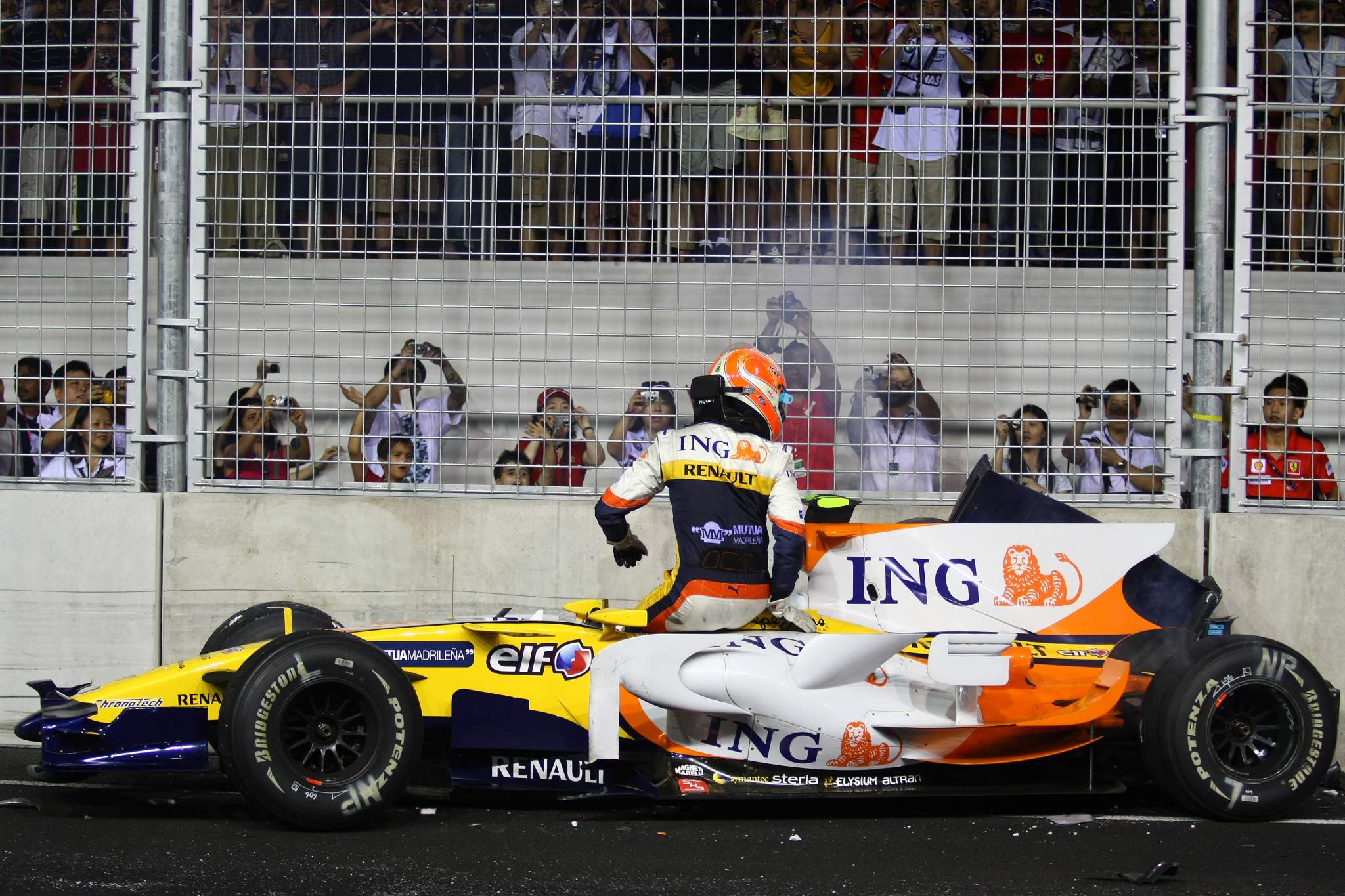
There was real concern on the Renault pit wall that Piquet may have injured himself. Thankfully, he was OK.
Mark Webber’s Red Bull – which had been running 13th – was one of three cars which were able to dive into the pitlane before the safety car was scrambled and the pitlane closed. Kubica and Nico Rosberg (running fourth and 10th respectively) were forced to pit despite the pitlane closure, because they were about to run out of fuel. They’d subsequently have to serve drive-through penalties.
The pitlane remained closed for three laps and as everyone then piled in, with the field having been so compressed behind the safety car, it moved Alonso up to fifth, just ahead of Webber.
Disastrously for Massa, in the panic to get him refuelled and out – and with the sister Ferrari of Raikkonen stacked behind – he was given the signal to go before the fuel hose had been detached. He drove down to the end of the pitlane trailing it before being told to stop.
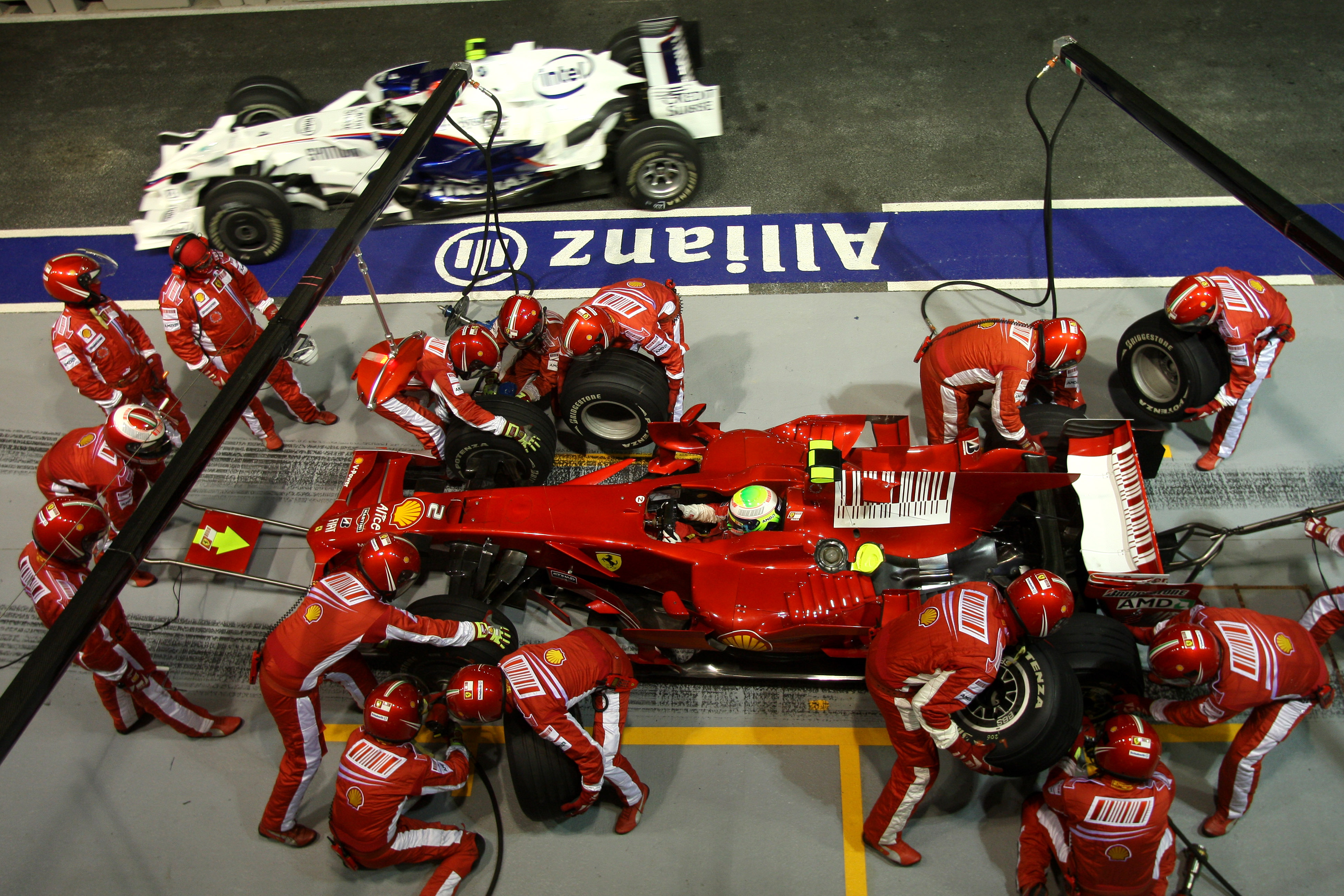
By the time he was pushed back and had the hose removed, he was last. He’d subsequently have to serve a drive-through for the unsafe release. He’d finish 13th out of 14 on an evening in which he’d been on-course for a pole-to-flag victory.
As racing got underway Rosberg’s Williams was leading (but had pitted illegally and so would be having to serve a drive through) from Trulli (who had not pitted as he remained wedded to his one-stop strategy), Giancarlo Fisichella’s Force India (likewise), Kubica (like Rosberg, subject to a drive-through) – then Alonso. So all the cars ahead of him would soon be pitting out of his way.
His only threat was from Webber, not far behind and fuelled to go longer up to the second stops. That threat disappeared when the Red Bull tried to select two gears simultaneously (believed to have been caused by electrical interference from an underground tram passing directly beneath).
Alonso’s second stop was a routine one on the way to victory, Rosberg and Hamilton following him across the line. Within the paddock, very few in rival teams believed the sequence of events at Renault had been coincidence. But there was no proof.
But even with the subverting of the race, Massa could have almost certainly been standing on one of the podium steps had it not been for the disaster at the pitstop. Even that would have put him in position to clinch the title in Brazil five weeks later.
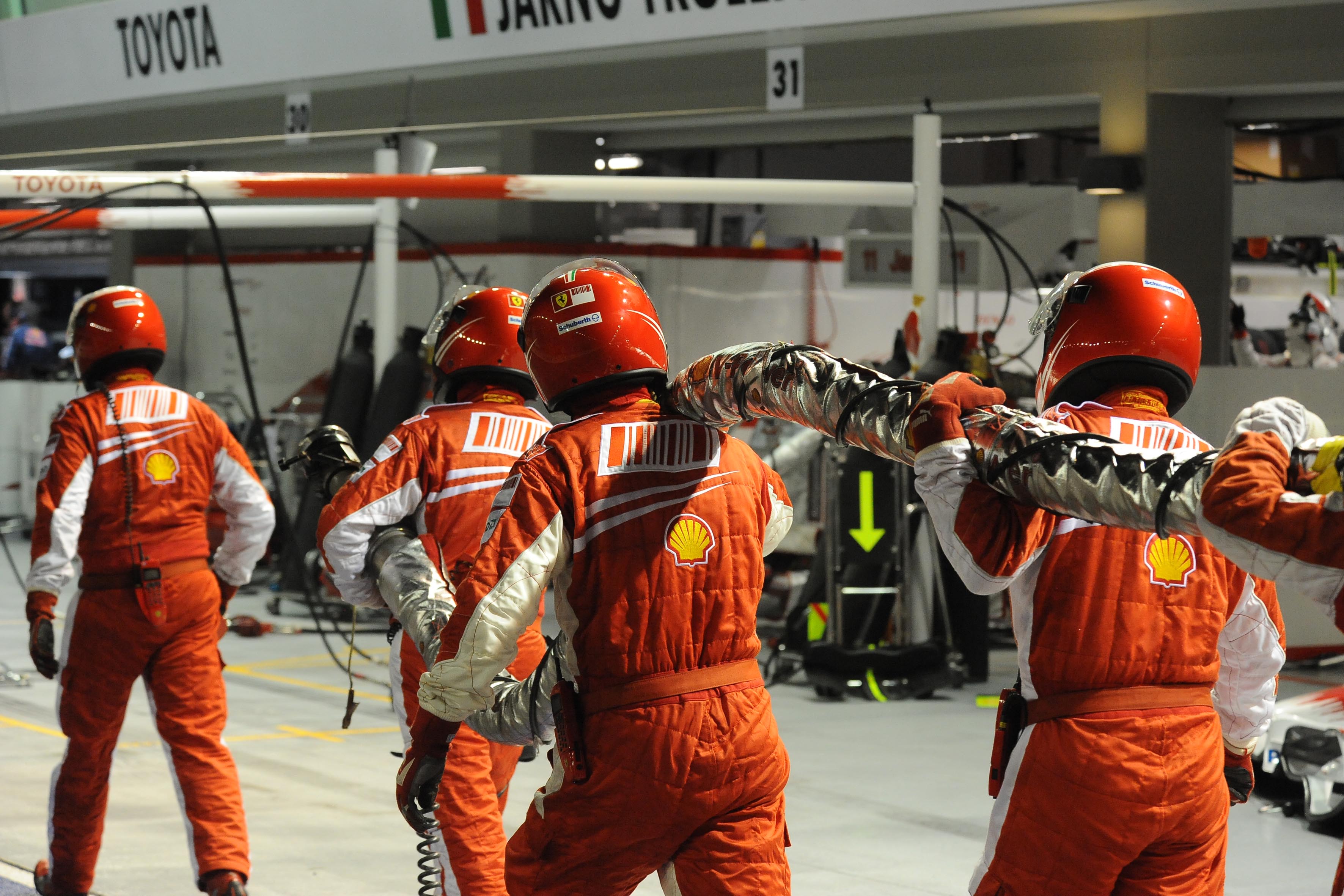
Reflecting on how the team had reacted to the emergency pitstop, team boss Stefano Domenicali was in rueful mood as we gathered behind the Ferrari unit in the paddock.
There had been similar chaos in the pitlane earlier in the season, in Valencia where Raikkonen had left with the fuel hose attached, injuring a mechanic. At the same race Massa had been released into the path of a Force India, putting his win there in jeopardy but ultimately resulting only in a fine.
“There is so much passion in the team and that helps drive us forward,” said Stefano. “But I think it is also the thing which clouds things in moments of crisis.
“I think it is something in our culture. I cannot be any more specific than that. I don’t know exactly what it is, but it’s there.”
That premature ‘go’ signal was Ferrari losing its grasp of the last chance of a title for a very long time. It’s been 15 years and counting.





